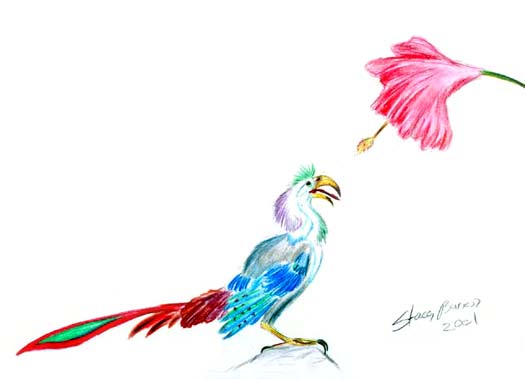

Scythers, the a large Australasian clade of twitavians, are generally thought of as large fruigvores, similar to the hornbills of RL. However, one scyther genus, Phoenix, has adapted to a different lifestyle---that of a nectar-drinker. These birds, commonly known as long-fung, are small, never more than 15 centimeters in length (not including the tail), and possess short, sharply curved bills and long, bristle-tipped tongues with which the lap nectar out of flowers.The symbiotic work these the long-fung do for their flowers is actually of a rather dubious nature. While the birds do function as pollen-transport for flowers, they have a definite taste for the pollen, itself, nibbling on flower stamens to obtain valuable protein. As a result, may of the flowers of Southeast Asia (even those of totally unrelated species) posses the distinctive "pleated skirt" shape.
Long-fung are widespread across eastern Eurasia and Indonesia, but are most populous in southeast Asia, where vast long-fung flocks blanket trees and blot out the sun when in flight. The celestial long-fung (Phoenix mirabilis, pictured above), is the most common species of mainland Southeast Asia, and possesses the short wings and luxurious tail feathers that characterize the genus.